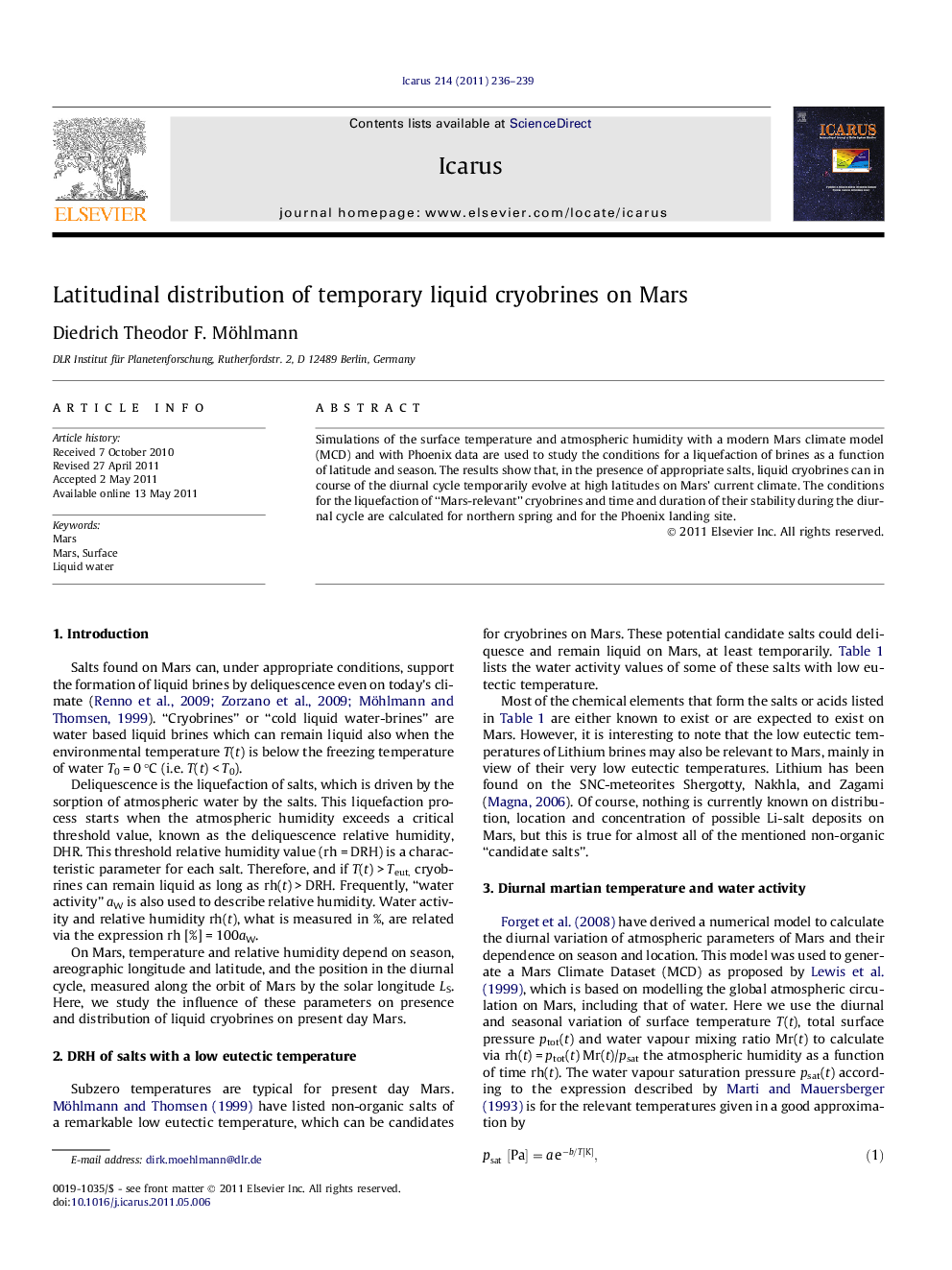| کد مقاله | کد نشریه | سال انتشار | مقاله انگلیسی | نسخه تمام متن |
|---|---|---|---|---|
| 1774350 | 1021162 | 2011 | 4 صفحه PDF | دانلود رایگان |

Simulations of the surface temperature and atmospheric humidity with a modern Mars climate model (MCD) and with Phoenix data are used to study the conditions for a liquefaction of brines as a function of latitude and season. The results show that, in the presence of appropriate salts, liquid cryobrines can in course of the diurnal cycle temporarily evolve at high latitudes on Mars’ current climate. The conditions for the liquefaction of “Mars-relevant” cryobrines and time and duration of their stability during the diurnal cycle are calculated for northern spring and for the Phoenix landing site.
► Brines can temporarily liquefy on Mars by uptake of atmospheric water (deliquescence).
► This liquefaction process is most effective in the cooler dusk to dawn hours.
► Best conditions for liquid brines to evolve are around spring.
► The conditions for temporary liquefaction increase with latitude.
Journal: Icarus - Volume 214, Issue 1, July 2011, Pages 236–239